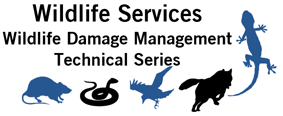U.S. Department of Agriculture: Animal and Plant Health Inspection Service
Date of this Version
8-2016
Document Type
Article
Citation
Wildlife Damage Management Technical Series, U.S. Department of Agriculture, Animal & Plant Health Inspection Service, Wildlife Services, August 2016
Abstract
The history of conflict between double-crested cormorants (Figure 1) and human interest in fisheries is long and convoluted. Following a low point in the 1970s, populations of cormorants expanded in North America, as did concerns about impacts on fisheries. By the late 1990s, natural resource agencies in 27 states reported losses of free-ranging fish stocks to cormorants. Agencies in 10 states, ranging from the Southwest to the Northeast, considered cormorant predation to be of moderate to major concern to fishery management.
Overall, double-crested cormorants are not major consumers of commercial and sportfish species. However, exceptions have been recorded at specific sites with documented impacts on local fisheries (see Damage to Fisheries section). Cormorants often congregate and can have significant local impacts where high concentrations of fish occur, such as stocking release sites, private fishing ponds, aquaculture ponds, reservoirs, spawning sites, and other areas.
Cormorants may be managed whenever their damage justi-fies the granting of the permits necessary to control them. Adult cormorants eat approximately 19 ounces of food per day, so local impacts of large flocks on fisheries can be substantial. Although cormorants frequently are blamed for reductions in fish harvests, this is not always substantiat-ed. Sometimes other factors, such as pollution, invasive species, and habitat loss may be the primary factor or con-tributing factors in the decline of fisheries.
Included in
Behavior and Ethology Commons, Biodiversity Commons, Other Animal Sciences Commons, Other Ecology and Evolutionary Biology Commons, Population Biology Commons, Terrestrial and Aquatic Ecology Commons


Comments
US government work